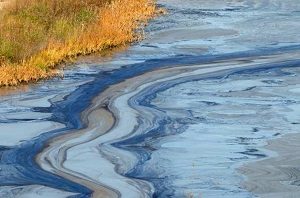Water pollution essay is the type of the student’s reflection on the narrow environment problems of the contemporaneity, which possess both the informative and the motivational values. The former aspect is supposed to raise the targeted audience’s knowledge on the actuality of a certain ecological problem in the particular district, city, or country. In its turn, the latter is thought to be more practical in its character as it includes the invitation to some action(s) that may improve the current state of affairs for the better. Altogether, the water pollution essay below is the example of the average student’s paper on the matter of the causes, effects, and solutions of the ecological disaster.
 There is no denying that the water pollution is the ever raising ecological problem of today, which has already achieved the global scope of spreading. Meanwhile, the core reason for this phenomenon might be the low awareness of the general public about the severity of the water contamination and, what is more important, the existing and forthcoming consequences of this ecological phenomenon. In this light, the access to this data may serve the powerful driving force, which can motivate the majority to change their attitude to the more environmentally-friendly one.
There is no denying that the water pollution is the ever raising ecological problem of today, which has already achieved the global scope of spreading. Meanwhile, the core reason for this phenomenon might be the low awareness of the general public about the severity of the water contamination and, what is more important, the existing and forthcoming consequences of this ecological phenomenon. In this light, the access to this data may serve the powerful driving force, which can motivate the majority to change their attitude to the more environmentally-friendly one.
Among the plenty of the reasons of the water pollution, one of the major ones is sewage that frequently violates the appropriate sanitation measures and, consequently, spreads the serious viruses to the environment. Moreover, another crucial factor that is responsible for the water deterioration is the waste water, which comes from the industrial sector, and pollutes the rivers as well as kills their inhabitants. In addition, the toxic waste from the water transport together with the oil pollution also deplete the amount of the drinking water and the one that can be used for the household purposes.
Accounting for the above-mentioned causes of the water pollution, it is quite easy to access the implications of sticking to the same mode of using the natural resources with their simultaneous contamination. The first derogatory consequence in this list is the depletion of the safe drinking water, which entails the increase of the humans’ illnesses and even mortality. The second negative result is the pollution of the rivers, seas, and oceans, which gives rise to the destruction of the marine environment. Finally, one more considerable effect of the water pollution is the disruption of the food channels, which leads to the species extinction and puts the danger to the further existence of the life forms on the Earth.
Taken together, it becomes clear that the majority of the ills, which have found their representation in the present-day situation with water, derives from the unreasonable and careless human activity. Regarding this, it is the people who are entitled to cease the aggravation of this disaster by the collaborative efforts. For instance, this high aim may be achieved by the organization of the education campaigns on this matter, the enactment of the strict regulations and laws or the implementation of the “polluter pays” principle. Besides, there are also the individual actions one may take to help, such as the daily rational economy of water, the refusal from the chemical and rubbish flushing, and the transfer to the environmentally safe cleaning liquids.
In the view of all that has been stated so far, it comes that whatever the solution one may take, the most important thing is to take care of the environmental sustainability rather than the personal profit. Likewise, the correct motivation is the prerequisite of the adequate decision-making as well as the genuine desire to make efforts on the contribution to the anti-pollution fight.
References
- Begum, L. (2015). Water pollution: Causes, treatments and solutions. US: Library of Congress.
- Goel, P. K. (2006). Water pollution: Causes, effects and control. US: New Age International.
- Halder, J. N., & Islam, M. N. (2015). Water pollution and its impact on the human health. Journal of Environment and Human 2(1): 36-46.
- Viessman, W. Jr., Hammer, M. J., Perez, E. M., & Chadik, P. A. (2009). Water supply and pollution control. US: Person Education.
- Vigil, K. M. (2003). Clean water: An introduction to water quality and water pollution control. US: Oregon State University Press.